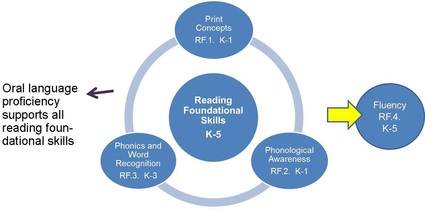beginning alphabetics tests and tools
Beginning Alphabetics Tests and Tools (BATT) strives to provide a ‘principled’ system for ABE/ESL teachers who want and/or need to develop their students’ knowledge of Roman alphabet letters, English letter-sound patterns, sight or high frequency words, and transfer of those letter-sound-word skills to text fluency and comprehension. BATT includes (1) teacher-friendly tests for determining known and unknown skills, (2) evidence-based reading instructional practices, orders, approaches, and lesson plans for teaching unknown skills, (3) teacher-tested lists of other activities and materials, and (4) time-saving teacher resources.
BATT is closely aligned with four Reading Standards: Foundational Skills (K–5) from the Minnesota Academic Standards (MDE, 2010) and Career and College Readiness Standards for Adult Education (OCTAE, 2013):
BATT is closely aligned with four Reading Standards: Foundational Skills (K–5) from the Minnesota Academic Standards (MDE, 2010) and Career and College Readiness Standards for Adult Education (OCTAE, 2013):
- RF.1. Demonstrate understanding of the organization and basic features of print. (Print Concepts)
- RF.2. Demonstrate understanding of spoken words, syllables, and sounds (phonemes). (Phonological Awareness)
- RF.3. Know and apply grade-level phonics and word analysis skills in decoding words. (Phonics and Word Recognition)
- RF.4. Read with sufficient accuracy and fluency to support comprehension. (Fluency)
Developing Reading and Writing, a highly respected booklet based on Improving Adult Literacy Instruction: Options for Practice and Research (NAP, 2012), an extensive report from the National Research Council of the National Academies, summarizes evidence-based principles shown to be effective for developing readers. The authors state all the principles “apply to all adult literacy learners, including those learning English as a second language and those with learning disabilities” (page 1). The five principles are:
- Use explicit and systematic reading instruction to develop the major components of reading - decoding, fluency, vocabulary, and comprehension - according to the assessed needs of individual learners.
- Combine explicit and systematic instruction with extended reading practice to help learners acquire and transfer reading component skills.
- Motivate learning through learners’ engagement with the literacy tasks used for instruction and extensive reading practice.
- Develop reading fluency to facilitate efficient reading of words and longer text.
- Explicitly teach the structure of written language to facilitate decoding and comprehension.
|
Acknowledgements
The developers, Marn Frank and Kristin Perry, extend a gracious thank you to these MN ABE/ESL language and literacy teachers, who contributed their valuable piloting time, insightful feedback, teacher-tested tools, and inspiring testimonials: Erin Evans, Lincoln Adult Education, ESL Teacher; Emily Fischer, Central MN ABE-St. Cloud, ESL Teacher; Kristin Klas, Hmong American Partnership, ESL Teacher; Lori Leininger, Robbinsdale Adult Academic Program, PANDA Coordinator; and Eleanor Purdy, Minnesota Literacy Council, ESL Teacher. |
Developed by:
Marn Frank, ATLAS Literacy & STAR Coordinator
[email protected]
Kristin Perry, Hmong American Partnership ESL Teacher
Marn Frank, ATLAS Literacy & STAR Coordinator
[email protected]
Kristin Perry, Hmong American Partnership ESL Teacher
This project was contracted and funded by Adult Basic Education Teaching and Learning Advancement System (ATLAS). Housed at Hamline University’s School of Education, ATLAS is made possible with a grant from the Minnesota Department of Education using federal funding, Workforce Investment Act of 1998 (P.L. 105-220), CFDA 84.002A and Minnesota Statute 124D.22.


